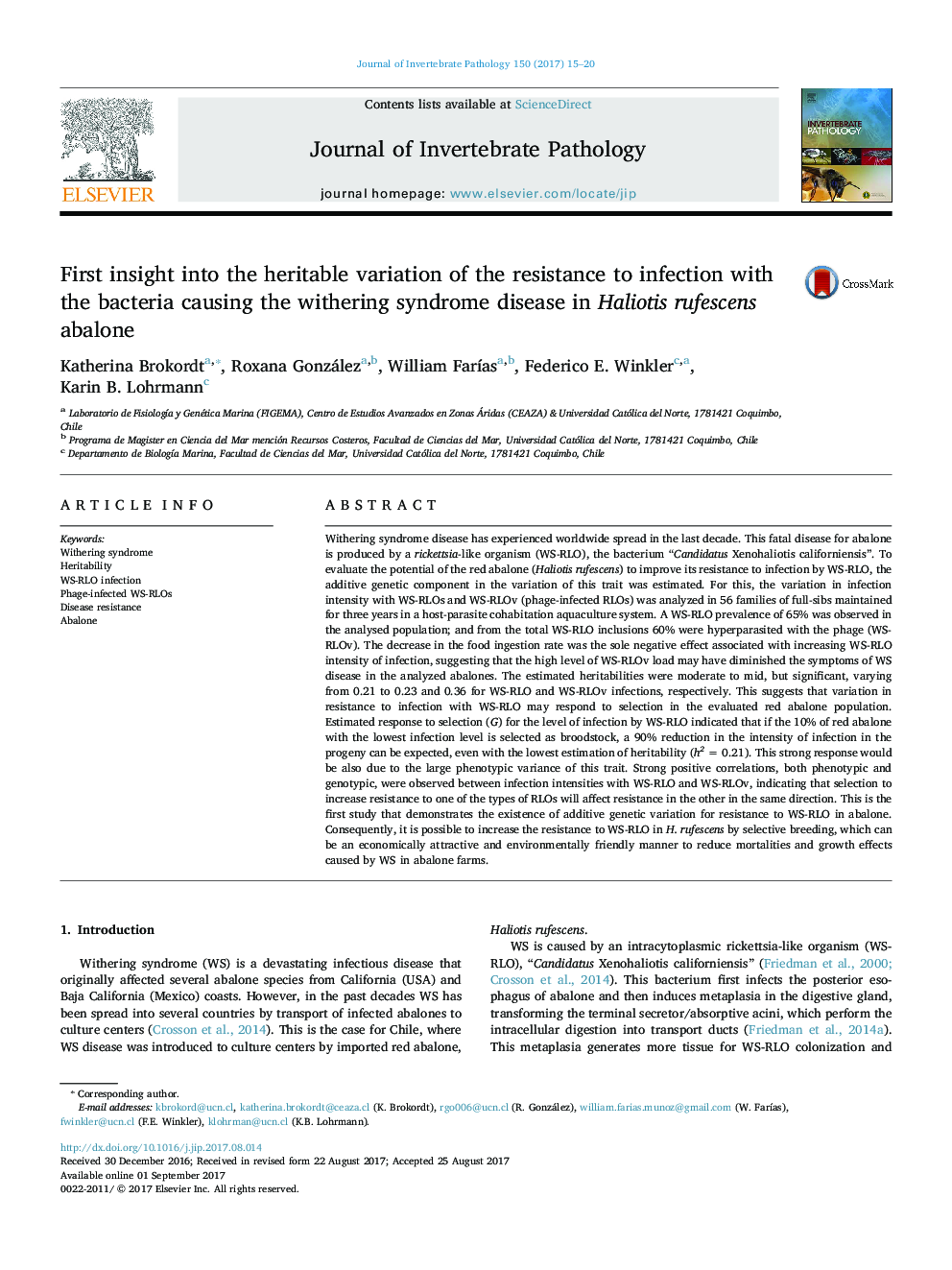| کد مقاله | کد نشریه | سال انتشار | مقاله انگلیسی | نسخه تمام متن |
|---|---|---|---|---|
| 5766905 | 1628202 | 2017 | 6 صفحه PDF | دانلود رایگان |

- Infection intensity with WS-RLOs is heritable in Haliotis rufescens abalone.
- Variation in resistance to WS-RLO can respond to selection in H. rufescens abalone.
- Selection response in resistance to WS-RLO will be correlated with that to WS-RLOv.
Withering syndrome disease has experienced worldwide spread in the last decade. This fatal disease for abalone is produced by a rickettsia-like organism (WS-RLO), the bacterium “Candidatus Xenohaliotis californiensis”. To evaluate the potential of the red abalone (Haliotis rufescens) to improve its resistance to infection by WS-RLO, the additive genetic component in the variation of this trait was estimated. For this, the variation in infection intensity with WS-RLOs and WS-RLOv (phage-infected RLOs) was analyzed in 56 families of full-sibs maintained for three years in a host-parasite cohabitation aquaculture system. A WS-RLO prevalence of 65% was observed in the analysed population; and from the total WS-RLO inclusions 60% were hyperparasited with the phage (WS-RLOv). The decrease in the food ingestion rate was the sole negative effect associated with increasing WS-RLO intensity of infection, suggesting that the high level of WS-RLOv load may have diminished the symptoms of WS disease in the analyzed abalones. The estimated heritabilities were moderate to mid, but significant, varying from 0.21 to 0.23 and 0.36 for WS-RLO and WS-RLOv infections, respectively. This suggests that variation in resistance to infection with WS-RLO may respond to selection in the evaluated red abalone population. Estimated response to selection (G) for the level of infection by WS-RLO indicated that if the 10% of red abalone with the lowest infection level is selected as broodstock, a 90% reduction in the intensity of infection in the progeny can be expected, even with the lowest estimation of heritability (h2Â =Â 0.21). This strong response would be also due to the large phenotypic variance of this trait. Strong positive correlations, both phenotypic and genotypic, were observed between infection intensities with WS-RLO and WS-RLOv, indicating that selection to increase resistance to one of the types of RLOs will affect resistance in the other in the same direction. This is the first study that demonstrates the existence of additive genetic variation for resistance to WS-RLO in abalone. Consequently, it is possible to increase the resistance to WS-RLO in H. rufescens by selective breeding, which can be an economically attractive and environmentally friendly manner to reduce mortalities and growth effects caused by WS in abalone farms.
160
Journal: Journal of Invertebrate Pathology - Volume 150, November 2017, Pages 15-20